An hour of private training with a 2680 GM (1/2)
The title maybe a tad misleading. In form it was an interview, but in substance it was a private tutorial that IM Sagar Shah received from GM Sasikiran who had just won the 52nd Capablanca Memorial 2017. Before leaving for the World Teams, Sasi found some time to discuss his games from Cuba where he scored 6.5/10 and remained undefeated. This article shows you how a 2680+ GM thinks and also what you could learn from the words and variations of this great master. Going over the analysis carefully is sure to boost your chess!
Sasikiran Krishnan wins 52nd Capablanca Memorial 2017
A dejected Sasikiran Krishnan was sitting at the reception of the Aspire Tower Hotel in Qatar. The Qatar Masters 2015 had just come to an end and Sasi (as he is affectionately called) had lost six Elo points. I asked him for a short video interview for ChessBase India and he reluctantly agreed. It was a three minute interview and one and a half year has passed since that day, but I won't forget the sheer determination that was concealed behind Sasi's smile when I asked him about his new year's resolution for 2016. "Just to play good chess, I believe, which I am quite capable of doing", was his answer.
It was not that things were too bad with Sasikiran's chess career. He had a rating of 2632, which was pretty decent, but he wasn't able to perform at his absolute best. In May 2012, Sasi had a rating of 2720. After Vishy Anand, he was the second India to have broken the 2700 barrier. And now he was nearly 100 points below his personal best.
The real breakthrough for Sasikiran happened when in Benasque Open 2016 he scored 9.0/10 and beat strong opponents like Sethuraman, Burmakin and many others, thereby gaining 20 Elo points. "I don't know what is it about Benasque", says Sasi. "I always seem to do well over there. Back in 2005 I became the champion scoring 9.0/10. Maybe it's the mountains. I can go for long walks and they sort of refresh me. Also the people and organizers there are very friendly and warm. I just started to enjoy chess without worrying too much about the results."

The positive approach towards the game was clearly seen in Sasi's play as he started beating strong grandmasters and performing well at many events. He even won the Rilton Cup at the start of 2017 ahead of Gata Kamsky. While Sasi's performance had improved at open events, the last Round Robin he had played was two years ago at Danzhou 2015 in China. Hence, when he got an invitation to the closed Round Robin event at the 52nd Capablanca Memorial 2017 in Cuba, it was very difficult to judge how Sasikiran would perform.
It was going to be a double Round Robin event with the top seed being Vasily Ivanchuk (2730). The second seed was Samuel Shankland (2676) followed by Sasikiran (2669). The three other players were Emilio Cordova (2645) from Peru, Kacper Piorun (2637) from Poland, and the local player Ortiz Suarez (2570). It was ten rounds of grueling chess and in order to prepare for it Sasi took a break from tournament play for nearly a month.
"I worked on all the phases of my game. Of course, preparing openings usually takes maximum time, but I ensured that I focused on other parts of the game as well. In order to improve my calculation I worked on volume one of Jacob Aagaard's Grandmaster Preparation series - Calculation. In fact I finished half of the book before the event."
The result was simply fantastic for the Indian grandmaster. He scored three wins, seven draws, remained unbeaten and emerged as the winner of the tournament, one point ahead of all his competitors.

"The media houses that covered my victory wrote that it was a smooth one. Yes, three wins and seven draws does give one that sort of impression. But nothing can be farther from the truth. My victory was anything but smooth!"

In between hectic travel of nearly 16,000 kilometres (!) from Cuba to Chennai and getting ready for the World Team Championship that was about to begin in four days in Khanty Mansiysk, Sasi was gracious enough to spare time for a Skype interview. We began with a few general questions where Sasi gave short answers. He got into his element when we began discussing his games. An interview that was going to last only a few minutes, stretched well over an hour as Sasi discussed the various subtleties of all his ten encounters.
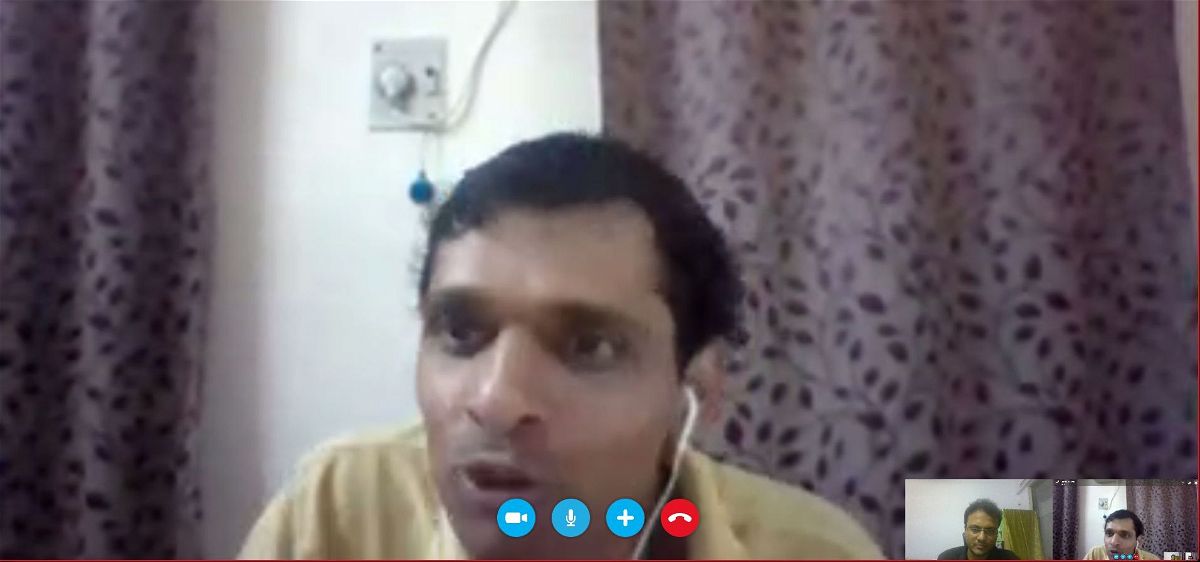
In the first part of the two part series, we will be covering the first five rounds of the event. The moves and analysis that Sasikiran spoke on Skype have been put into ChessBase boards by me. But that's my only involvement. The annotations are Sasikiran's. As an introduction to every game I also tell you about what I learnt from the moves and the analysis.
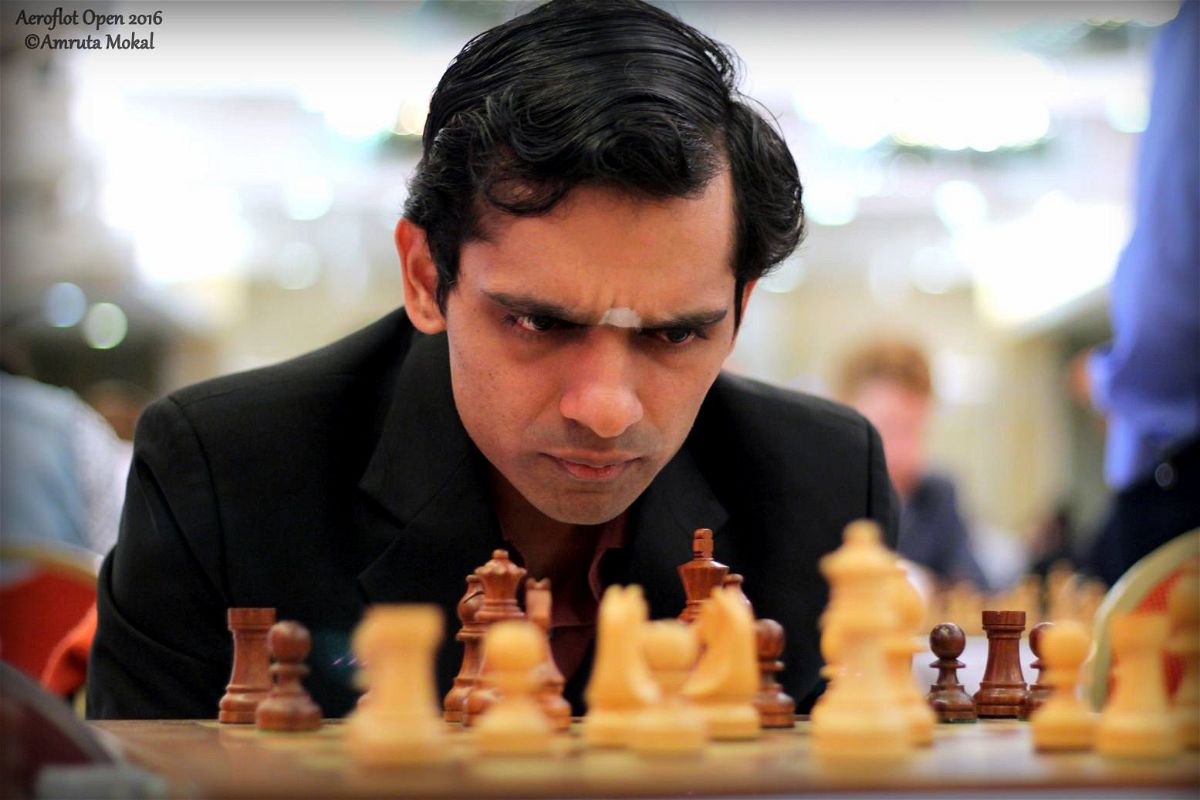
Round one, white against Kacper Piorun
In this game Sasikiran showed some brilliant opening preparation. A move made by his opponent 12...exd4, which looks absolutely normal, was exploited in great fashion by Sasi. This game already shows that Sasikiran's opening preparation and understanding is at a very high level.

[Site "Matanzas CUB"]
[Date "2017.05.27"]
[Round "1.3"]
[White "Sasikiran, Krishnan"]
[Black "Piorun, Kacper"]
[Result "1-0"]
[ECO "C96"]
[WhiteElo "2669"]
[BlackElo "2638"]
[Annotator "Sasikiran Krishnan"]
[PlyCount "55"]
[EventDate "2017.05.27"]
O-O 9. h3 Na5 {The Chigorin variation.} 10. Bc2 c5 11. d4 Nd7 12. a4 exd4 $6 {
This was already an inaccuracy.} (12... Bb7 {is how the play continues.} 13. d5
Qc7 {There was a recent game at the European Championship. Sutovsky played
this position as White.}) 13. axb5 {This is an important move.} axb5 14. cxd4 {
[%cal Gb1c3] And now the knight can come to c3 and hence b4 has to be played.
This is the reason why 12...exd4 was inaccurate.} (14. b4 dxc3 15. bxa5 b4 {
And I was not so comfortable with this position with these mass of black pawns.
}) 14... b4 15. Nbd2 Nb6 16. Nf1 c4 $6 {The pawns on c4 and b4 start to become
very weak.} 17. Ne3 (17. Bd2 {is much more accurate.} d5 18. Ne3 Be6 19. Ne5 $1
$16 {The queenside is frozen and I am already threatening things like exd5 and
then the c4 pawn would hang. Also I am threatening Rxa5.}) 17... d5 18. exd5 (
18. e5 {gives White space in the centre and the kingside but also let's black
expand on the queenside unhindered.}) 18... Bb7 (18... Nxd5 $2 19. Nxd5 Qxd5
20. Rxe7 $18) 19. Ne5 Nxd5 20. N3xc4 (20. Nf5 {was stronger and it is
impossible to withstand the kingside attack. I took the pawn on c4 because it
was the start of the event and I wanted to play it safe.}) 20... Nxc4 21. Rxa8
Bxa8 22. Qd3 $1 {The knight on e5 was nicely placed, so why to move it. After
this White is already winning and the game is over.} (22. Nxc4 {was also
possible.}) 22... g6 23. Qxc4 Bf6 24. Bd2 Qd6 25. Bb3 Kg7 26. Ng4 Rd8 27. Bh6+
Kg8 28. Qc5 $1 (28. Qc5 {There is no way to keep the f6 bishop defended.} Qa6
29. Bc4 $18) 1-0
Round two, black against Vasily Ivanchuk
Ivanchuk is known for his uncompromising style of play. He never really agrees for short draws and tries to fight until the very end. But against Sasikiran, he offered a draw in just 15 moves. That too Ivanchuk had the white pieces. What is interesting for you to observe from the game is Sasikiran's analysis of how he assessed the position when he accepted the draw and the variation he gives in order to show how the game could have continued.
[Site "Matanzas CUB"]
[Date "2017.05.28"]
[Round "2.2"]
[White "Ivanchuk, Vassily"]
[Black "Sasikiran, Krishnan"]
[Result "1/2-1/2"]
[ECO "D10"]
[WhiteElo "2738"]
[BlackElo "2669"]
[Annotator "Sasikiran Krishnan"]
[PlyCount "29"]
[EventDate "2017.05.27"]
O-O 9. Qc2 Re8 10. Rfe1 a6 11. Rad1 b5 12. cxd5 exd5 13. e4 b4 14. e5 bxc3 15.
exf6 {There was some play left in the last position, but not much.} (15. exf6 {
Play could have continued along these lines} Rxe1+ 16. Bxe1 {Has to take with
the bishop otherwise cxd2 would lose a piece.} Nxf6 17. Qxc3 Bg4 $1 {An
important move.} 18. Qxc6 Bxf3 19. gxf3 Nh5 (19... Rb8 {is the computer's move.
And I think the position is not so easy to evaluate. In general the broken
structure and the weakness on d4 give me enough compensation all the time.})
20. Ba5 Qg5+ 21. Kh1 Rf8 {This is kind of completely messy. I am not sure
about the objective evaluation of the position, but I thought that draw with
Ivanchuk with the black pieces is anyway a good result and so I accepted the
draw.}) 1/2-1/2
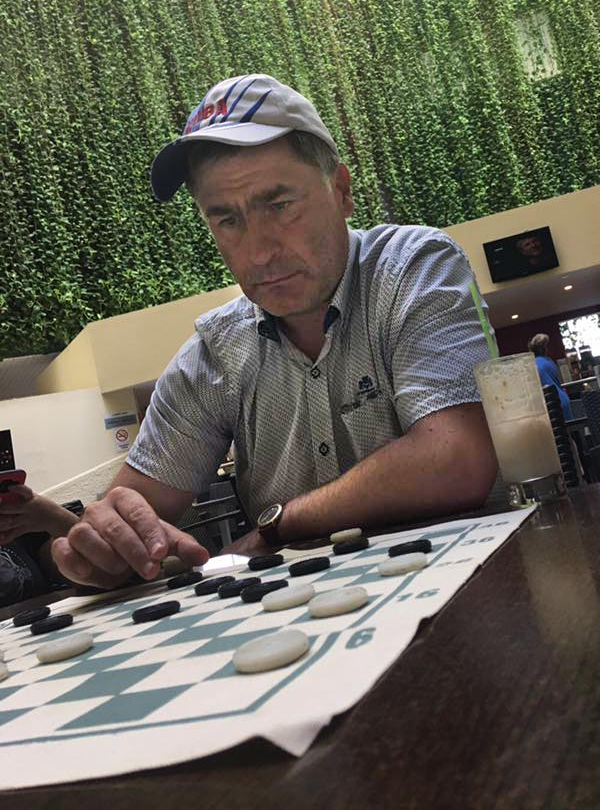
Round three, white against Samuel Shankland
The opening went not so well for Sasi as he landed in an uncomfortable position after just ten moves. "It was then that I decided to go for 11.b3!? which was perhaps not the best move objectively, but a good practical choice", says Sasikiran. "If I were Black in the last position I would not have accepted the draw." The game ends in 18 moves but it is interesting to note how the grandmaster from Chennai assesses the final position and suggests way for Black to increase the pressure.
[Site "Matanzas CUB"]
[Date "2017.05.29"]
[Round "3.2"]
[White "Sasikiran, Krishnan"]
[Black "Shankland, Samuel L"]
[Result "1/2-1/2"]
[ECO "E06"]
[WhiteElo "2669"]
[BlackElo "2676"]
[Annotator "Sasikiran Krishnan"]
[PlyCount "35"]
[EventDate "2017.05.27"]
Bb7 9. Nc3 {This along with my next move is the start of a dubious plan.} (9.
Qxc4 {is the main move.}) 9... Nbd7 10. e4 a6 11. b3 $5 {I think practically
this was a very good choice. You didn't play the best in the opening, so what
to do? It's time to move on. I decided to sacrifice the pawn, grab the centre
and put some pressure.} (11. d5 {I was trying to make this work but after} Bc5
{f2 is getting quite weak. So I thought to myself let's change the direction
of the fight and I played b3.}) 11... cxb3 12. axb3 h6 $6 {After this move I
felt that I was alright.} (12... Bb4 $5 {With this move he could have posed me
huge problems.} 13. e5 Bxc3 14. Qxc3 ({Sam was quite afraid of this variation:
} 14. exf6 Bxa1 (14... Bxf3 15. Bxf3 Bxa1 16. fxg7 Kxg7 17. Bxa8 Qxa8 18. Be3
Ne5 $1 19. dxe5 Bxe5 20. Bd4 {The weak position of the Black king gives Black
adequate compensation.}) 15. fxg7 Kxg7 16. Ng5 Bxg2 {During the game I thought
he can just take this and there is no mate, but on deeper inspection I realize
that White has good attacking chances.} 17. Qxh7+ Kf6 18. Kxg2 $13 {And even
though I am a rook down, the position is complicated.}) 14... Nd5 15. Qe1 Ne7
$1 {is a strong move. The knight is coming to f5 and I felt that I was just a
pawn down.}) 13. Nd2 c5 14. e5 Nd5 15. Nxd5 Bxd5 16. Bxd5 exd5 17. Nf3 Qc8 18.
Qe2 {I offered a draw and he accepted. My feeling is that he should have
continued playing, as he has a risk free position. Something like Qc6 would
have been good. If I was Black I would have played on. So I can say that I was
lucky to get away with a draw. But in closed events many times a draw with
black is a good result. That being said at the end of the day, it's all a
question of how you evaluate a position. Sam evaluated the position as fine
for White and he took the draw.} (18. Qe2 Qc6 $1 19. Rxa6 Rxa6 20. Qxa6 Ra8 21.
Qe2 Nf8 $1 $15 {The knight comes to e6 and it is a nice position to play for
Black. The pawn on b3 is weak and so is the pawn on d4. Sometimes Black can
even plan something like g5-g4.}) 1/2-1/2
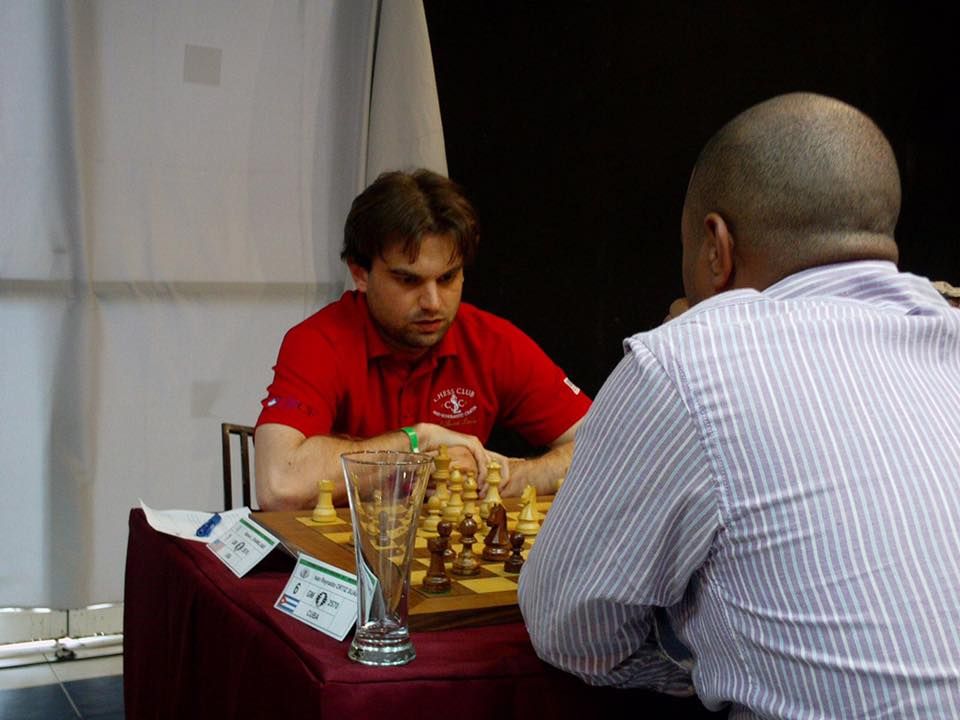
Round four, black against Emilio Cordova
This was a complete fist fight. Sasikiran got a nice position out of the opening, but very quickly went wrong. Seeing that his opponent is building up the pressure he offered a draw on 18th move. To Cordova's credit he declined the draw offer. This game shows how fortunes can fluctuate and how even the best sometimes miss simple, very simple moves. Sasikiran could have won a piece, but instead had to settle for a draw. It's a good question as to who should be sad with a draw, because both the players had their chances to win the game.
[Site "Matanzas CUB"]
[Date "2017.05.30"]
[Round "4.3"]
[White "Cordova, Emilio"]
[Black "Sasikiran, Krishnan"]
[Result "1/2-1/2"]
[ECO "A40"]
[WhiteElo "2645"]
[BlackElo "2669"]
[Annotator "Sasikiran Krishnan"]
[PlyCount "70"]
[EventDate "2017.05.27"]
9. b3 Bf5 10. Bb2 Nb4 11. Nh4 Be6 12. e3 Ne4 13. Qe2 Qd7 {I had the feeling
that my opponent playing the opening in a way to avoid my preparation. But his
position looks really suspicious. Look at the knights on a3 and h4. Black is
surely better, but from this point onwards he began to defend pretty well.} 14.
Nc2 $1 {was a good move.} Na6 $6 (14... Nxc2 15. Qxc2 Bh3 {might have been the
simpler way to play, but I thought the position was equal here and I was
looking for more.}) 15. Rab1 f6 16. Rbc1 Rfc8 17. Nf3 Nc7 $6 {After making
this move I already felt something had gone wrong and hence on the next move I
offered a draw.} (17... Bg4 {This, according to me, is the right way for Black
to proceed.}) 18. Nfe1 $1 $14 {The knight is coming to d3 and already White's
position is preferable. Also because of the unusual nature of the opening, we
were already approaching time trouble.} b6 {At this point we had 15 minutes
left for the remaining 22 moves before we got additional time. I thought it
would be some kind of a lottery and hence I offered a draw. Which to his
credit he declined.} 19. f3 Nd6 20. Na3 Bh6 21. Rd1 b5 {This was already some
sort of desperation and a pretty bad move. It weakens the c5 square beyong
repair.} (21... Bf7 {I could have made this calm move and kept it equal, but I
was already feeling very uncomfortable about my position and wanted to resolve
some tension.}) 22. Nd3 bxc4 23. Nc5 Qe8 24. bxc4 (24. Nxe6 Nxe6 25. bxc4 $16 {
This was the easiest way to gain a clear edge for White. He not only has the
two bishops, but with the move f4 he can also create lot of problems for my
pieces.}) 24... Bf7 {Now there was still some hope.} 25. cxd5 $6 {This looks
inaccurate.} (25. e4 Nxc4 26. Nxc4 dxc4 27. f4 {This position is very annoying.
The knight on c5 is strong and the bishop on h6 is out of the game. Also e5-e6
is coming and the whoe thing looks really difficult for Black to play.} Na6 $5
{After this move the computer thinks it's perhaps only a slight edge for White
or maybe no edge at all, but I think practically it's a difficult position to
play.} (27... Rab8 28. Bc3 $16)) 25... cxd5 26. e4 e6 {I was not very unhappy
with my position here.} 27. Bh3 (27. e5 $6 fxe5 28. dxe5 Nf5 $17 {The knight
on c5 starts to get quite shaky.}) 27... Rcb8 28. Bc3 Nb7 {At this point I
started to get ambitious and began to feel that I had good chances for an
advantage as well.} 29. Nxb7 Rxb7 30. Nc2 $2 {I think this was just a pawn
blunder by my opponent. We both were down to our last few minutes of the clock
and this is the cause for the errors.} (30. Qc2 {Black has some initiative on
the queenside, but it doesn't lose material.}) 30... Qxa4 31. Rb1 Rb3 32. Bd2
$2 {A huge blunder by my opponent. Here I could have simply won a piece.} Bxd2
$2 (32... Rxb1 33. Bxh6 {I saw this during the game, but I felt something like
the dark squares around my king are very weak. This is typical hallucination
when you are low on time. There is absolutely no way for White pieces to reach
Black's dark squares and the position is just lost for White.} (33. Rxb1 Qxc2)
33... Rxf1+ 34. Bxf1 Rb8 $19) 33. Qxd2 Rab8 34. Ra1 Qc4 35. Rxa5 Qc3 {I think
Black is slightly better even here. But with low on time and already having a
feeling of missing something I decided to offer a draw. He accepted. I
wouldn't call it a heartbreaking draw, but it was surely an opportunity that I
had missed.} (35... Qc3 36. Qxc3 Rxc3 37. Rc5 {I saw this move and felt that
if I took on c5, then after dxc4, White knight gets the d4 square. But here I
had a strong move} Rbb3 $1 $15 {This is quite some annoying pressure on White.}
(37... Rxc5 38. dxc5 {was a position I didn't like too much.})) 1/2-1/2
Round five, white against Ortiz Suarez
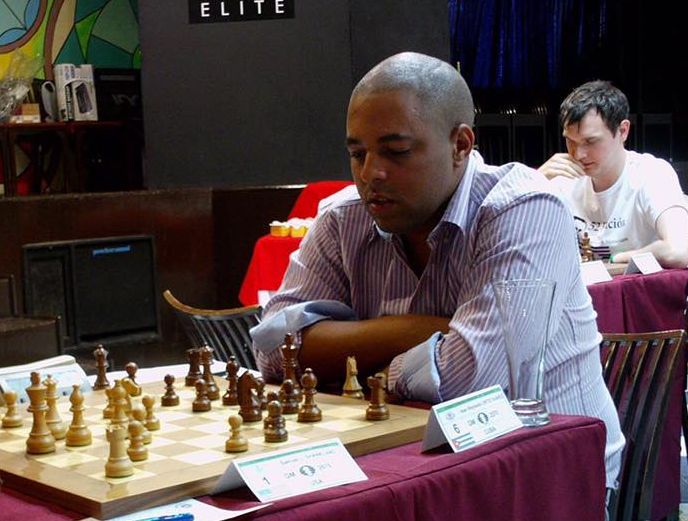
The Najdorf is a topical opening and in order to do well against it you should be one step ahead of your opponent. This time it was the Cuban GM who was very well prepared from the black side. Sasi fell behind by an hour on the clock. Instead of pressing too much he took the practical decision of agreeing to a draw. In the final position White is a pawn up, but Sasikiran explains why he accepted the draw.
[Site "Matanzas CUB"]
[Date "2017.05.31"]
[Round "5.1"]
[White "Sasikiran, Krishnan"]
[Black "Ortiz Suarez, Isan Reynaldo"]
[Result "1/2-1/2"]
[ECO "B90"]
[WhiteElo "2669"]
[BlackElo "2570"]
[Annotator "Sasikiran Krishnan"]
[PlyCount "50"]
[EventDate "2017.05.27"]
left when the game ended, and he had nearly one hour twenty minutes left!} 1.
e4 c5 2. Nf3 d6 3. d4 cxd4 4. Nxd4 Nf6 5. Nc3 a6 6. Be3 e5 7. Nb3 Be6 8. f3 Be7
9. Qd2 O-O 10. O-O-O Nbd7 11. g4 b5 12. g5 Nh5 13. Kb1 Rc8 14. a3 g6 15. Rg1
Nb6 16. Na5 Qc7 17. Nd5 Nxd5 18. exd5 Bd7 19. c4 Bd8 20. Nc6 Bxc6 21. dxc6 Qxc6
22. cxb5 axb5 23. Rc1 Qxc1+ 24. Qxc1 Rxc1+ 25. Kxc1 b4 {My opponent offered a
draw which I accepted.} (25... b4 26. axb4 {I think I should take the pawn.}
Nf4 {Here I was thinking about} 27. Bc4 d5 28. Bxf4 exf4 29. Bxd5 Re8 {[%cal
Gg8g7,Gh7h6] And at this point I felt that my g5 pawn is weak and his rook is
penetrating into my position. Also he has ideas of Kg7 followed by h6. Perhaps
it is possible to play on here as White. But my opponent was playing so fast
and I already was one hour less on the clock. I decided to just accept the
draw and get ready for the second half of the tournament.}) 1/2-1/2
A game that is worth mentioning from the fifth round is Ivanchuk's excellent win over Shankland with a long term exchange sacrifice. Sasikiran agreed that the game was nice, but suggested an improvement for Sam, where the American player could have gone for an exchange sac himself. The game below has only Sasi's notes, but make sure you go through all the moves to understand why Ivanchuk is considered as one of the best players in the world.
[Site "Matanzas CUB"]
[Date "2017.05.31"]
[Round "5.3"]
[White "Ivanchuk, Vassily"]
[Black "Shankland, Samuel L"]
[Result "1-0"]
[ECO "E15"]
[WhiteElo "2738"]
[BlackElo "2676"]
[Annotator "Sasikiran Krishnan"]
[PlyCount "99"]
[EventDate "2017.05.27"]
Nc6 9. O-O d5 10. cxd5 Nb4 11. Qa4 Nbxd5 12. Rfd1 Qe8 13. Qxe8 Rfxe8 14. Ne5 c5
{This game became popular for Ivanchuk's exchange sacrifice, but I think
Shankland could have sacrificed an exchange himself at this point.} (14... Nxc3
$5 15. Bxb7 (15. Bxc3 {This is a better move for White than taking on b7.} Bxg2
16. Kxg2 $14 {This is still better for White, but with two pairs of minor
pieces out from the board, this looks defensible position for Black.}) 15...
Nxe2+ 16. Kf1 Nxd4 17. Bxa8 Rxa8 {Black has two pawns for an exchange and I
think a pretty good position.}) 15. dxc5 Bxc5 16. Rac1 Rac8 $6 (16... Bd4 {
This looks fine for Black.}) 17. Nb5 $1 $14 {After this I already think Black
has some problems that are not so easy to solve.} a6 18. Rxc5 Rxc5 19. Nd6 Rb8
20. Nexf7 Ba8 21. e4 Nc7 22. f3 Rf8 23. Be3 Rc2 24. Ne5 Rd8 25. Bf1 Nfe8 26.
Bd3 Rxb2 27. Ndc4 Rxa2 28. Bxb6 Ra4 29. Rc1 Rb4 30. Kf2 Rb5 31. Bf1 Rb8 32. Nd7
Rd8 33. Nce5 Rb2+ 34. Kg1 Bb7 35. Bxc7 Rc8 36. Nd3 Rd2 37. Bf4 Rxc1 38. Bxd2
Rd1 39. Bb4 Bc6 40. N7e5 Bb5 41. Kf2 Nf6 42. h4 h6 43. Bc3 Nh5 44. Be2 Rb1 45.
g4 Nf6 46. Ke3 Rh1 47. h5 Nh7 48. f4 Nf6 49. Bf3 Rb1 50. Nc5 1-0
Thus at the halfway mark Ivanchuk was leading the field with +2. Sasikiran was in the second spot with 3.0/5.


